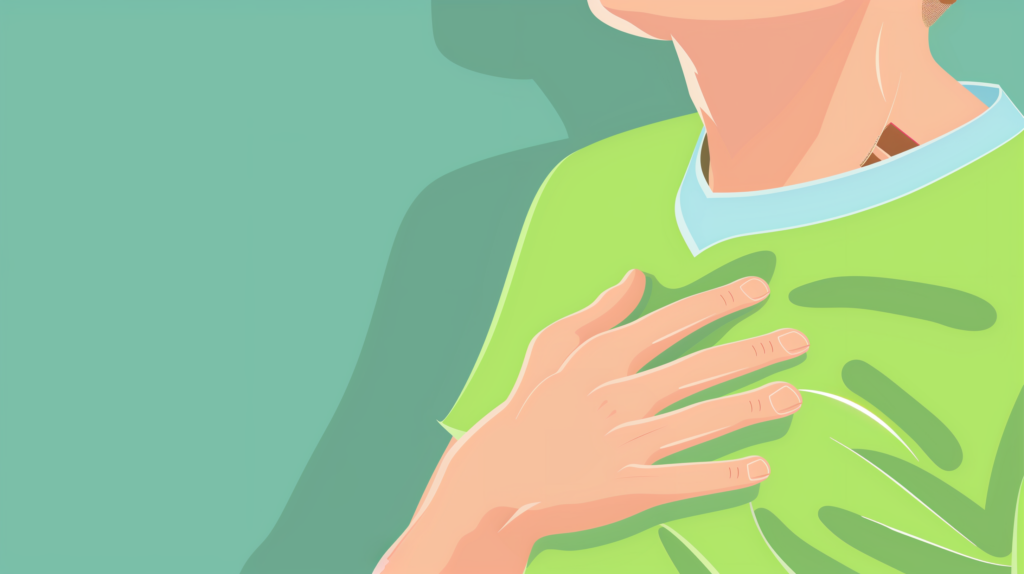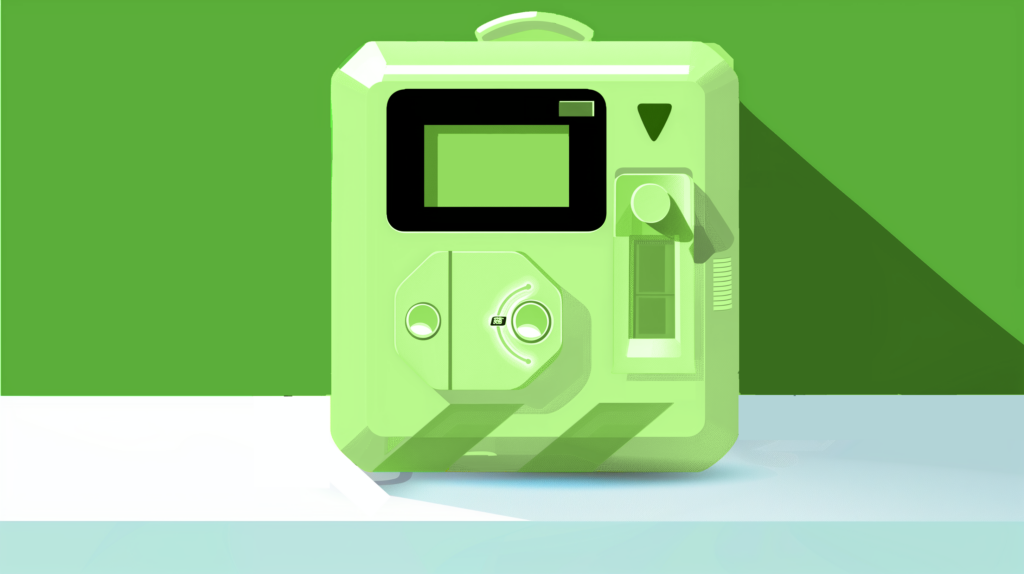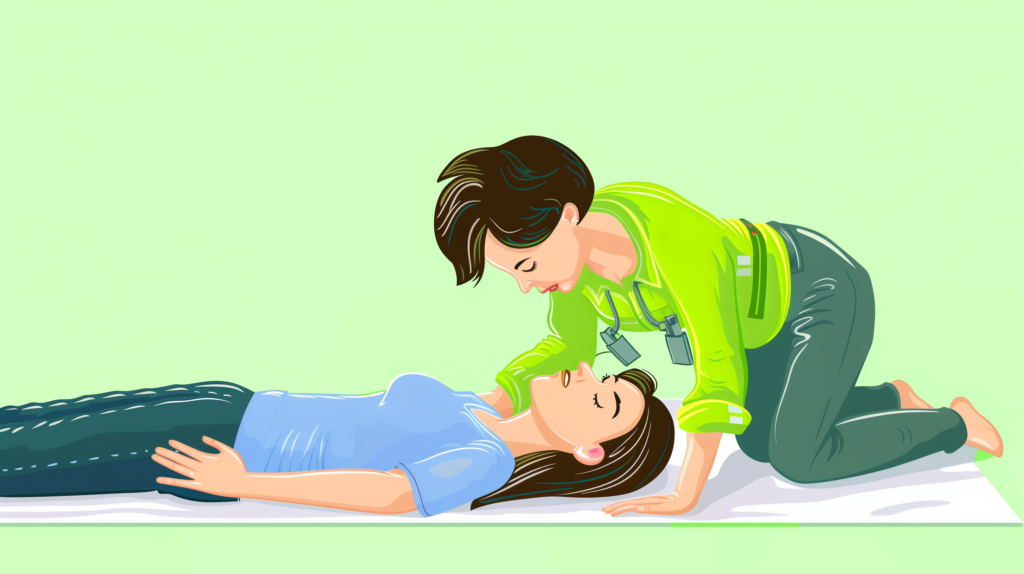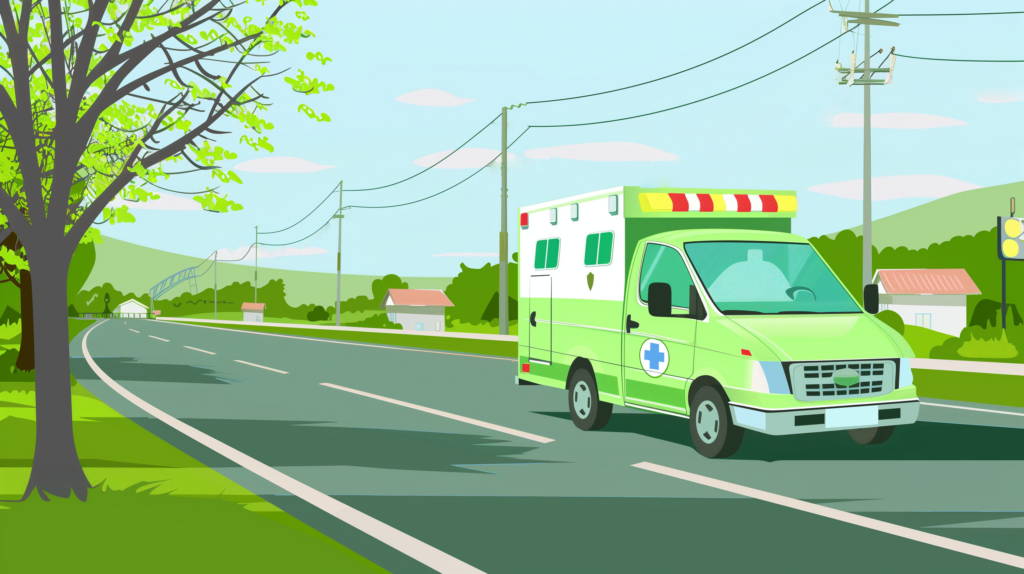Experiencing or witnessing a heart emergency can be terrifying.
What if there was a simple tool that could turn a moment of fear into a lifesaving action? Enter the Automated External Defibrillator (AED).

These are simple-to-use devices designed to help even those without medical training save lives during cardiac emergencies.
This guide will explain everything you need to know about AEDs, from what they are to how you can use one to potentially save a life.
Quick Insights
- Lifesavers in a Box: AEDs are portable devices that help save lives by correcting dangerous heart rhythms through electric shocks. They are especially effective in the critical first minutes of a cardiac emergency.
- User-Friendly for Everyone: With voice-guided instructions, AEDs are quick and easy for anyone to use—no medical background is needed. Some models even deliver shocks automatically, while others may require pressing a button.
- Maintenance Matters: Keeping an AED ready means regularly checking its battery life, storing it in an easily accessible location, and keeping it clean and ready for use.
- Act Fast, Save a Life: Swift action using an AED can significantly improve survival rates in cases of sudden cardiac arrest. Learning to use one empowers you to be prepared, potentially saving lives in your home or community.
- From Fear to Confidence: Knowing how to use an AED can transform anxiety in emergencies into confident, life-saving actions. This crucial skill can make anyone a vital link in the chain of survival during heart emergencies.
What Does AED Stand For and How Does One Work?
An Automated External Defibrillator, or AED, is a true lifesaver in a compact package.
An AED is the first line of defence in the fight against cardiac arrest, in which the heart suddenly stops beating in a regular rhythm. By delivering a targeted electric shock, an AED can help the heart resume its normal rhythm.

Used in conjunction with cardiopulmonary resuscitation (CPR), these indispensable devices are designed to jump-start a heart beating irregularly due to a sudden cardiac arrest.
This portable device can mean the difference between life and death by delivering an electric shock to restore the heart’s rhythm.
It does so by checking the heart’s rhythm and, if necessary, delivering a shock to help the heart return to its regular beating pattern.
This quick action is vital in emergencies involving dangerous heart rhythms.
In the first critical minutes of a cardiac arrest, when every second counts, using an AED can stop further damage to the heart and other organs. According to the American Heart Association, CPR and AED use can double, or even triple, a person’s chance of survival.

For each minute a person goes without CPR or AED intervention, the chances of survival drop by 7- to 10-percent.
Choosing Between Automatic and Semi-automatic AEDs
AEDs come in two main types: automatic and semi-automatic.
Both are designed with simplicity in mind but function a bit differently:
- Automatic AEDs: These devices take charge by analyzing the heart’s rhythm and delivering a shock automatically if needed. This game-changer feature offers prompt assistance without room for hesitation or error—making an already easy-to-use lifesaving device even more straightforward.
- Semi-automatic AEDs: With these models, after the device analyzes the heart rhythm and decides a shock is necessary, it will ask you to press a button to deliver the shock. This step ensures you can make sure everyone is safely away from the person receiving help.
No matter which type you encounter, both models provide clear, step-by-step voice instructions.
This design ensures that anyone can use them effectively in an emergency, regardless of medical training.
Why AEDs Are Crucial in Saving Lives
When someone’s heart stops beating correctly due to a sudden cardiac arrest, every moment without treatment increases the risk of severe outcomes or even death.
This is where AEDs step in as lifesavers.
They are crucial for two main reasons:
- Immediate Response: AEDs provide a quick way to respond to cardiac emergencies. Performing Cardiopulmonary Resuscitation is essential, but an AED can deliver an electric shock to help the heart re-establish a normal rhythm.
This is especially effective for conditions like ventricular fibrillation or pulseless ventricular tachycardia.
- Accessibility and Effectiveness: These devices are now more accessible than ever and are available in many public spaces, schools, and homes.
Their ease of use and effectiveness in treating cardiac arrests make them indispensable tools in emergency preparedness.
How Easy Is It to Use an AED?
One of the most significant advantages of AEDs is their design for accessibility and ease of use.
They’re lightweight and portable, often including easy-to-mount containers that allow you to place these devices in hallways or other open areas where they can be easily spotted when needed.
AEDs are easy to implement nearly anywhere, from homes to offices to public spaces.
And unlike many medical devices, you can purchase an AED without a prescription. This accessibility ensures that more spaces can be equipped with this lifesaving device.
Each AED comes with clear, concise instructions, minimizing the need for intensive training.
While you should always ensure anyone who might need to use an AED in your home, office, school, or medical facility is comfortable doing so, they all speak instructions out loud to ensure the finer points of operation are never a concern.
AED Maintenenance Tips
While AEDs are easy to use, some basic maintenance is necessary to ensure they’re ready to use when needed.
Always opt for devices approved by health authorities, register your device for safety updates, and engage in regular practice runs.
This ensures that the AED is always ready for use and that people feel confident using it during an emergency.

Maintenance is often as simple as visually inspecting the AED for damage, keeping it clean with a periodic wipe-down using a clean, damp cloth, and verifying that any indicator lights are properly working.
You’ll also need to test and possibly replace the battery and electrode pads every few years.
This is a process that you can typically perform yourself. However, consulting with your local medical device or CPAP supply store will often provide additional assistance if needed.
Consult your manufacturer’s instructions for the exact timing and processes required to keep your AED running dependably.
Using an AED: A Step-by-Step Guide
Knowing how to use an AED can make all the difference in an emergency. Here’s a simplified guide to using one effectively:
1. Immediate Response: If someone appears to be in cardiac arrest (not breathing and unresponsive), immediately call for emergency medical help.
2. Turn On the AED: Once you have the AED, switch it on. It will provide voice-guided instructions that you should follow closely.
3. Prepare the Person: Apply the electrode pads to the person’s bare chest as indicated by the AED. Ensure the chest is bare and dry.
4. Stand Clear: The AED will analyze the heart’s rhythm. Ensure everyone is clear of the person before any shock is administered.
5. Deliver the Shock: If needed, the AED will prompt you to press a button (semi-automatic) or automatically administer a shock (automatic).
6. Continue Assistance: If the AED advises, begin CPR after the shock until professional help arrives or the person shows signs of recovery.
Following these steps can significantly increase the chances of survival in the event of cardiac arrest.
Frequently Asked Questions
Can anyone use an AED?
Absolutely. AEDs are designed with everyone in mind, providing clear instructions and voice prompts—sometimes in multiple languages—to guide you through the process, even if you’ve never used one before.
How quickly must I act with an AED during a cardiac arrest?
Immediate action is critical. The chances of survival decrease by as much as 10% with each passing minute, so using an AED as soon as possible, along with CPR, is vital.
Where can I find an AED?
AEDs are increasingly available in public places like shopping centers, airports, and schools. They’re often held in wall-mounted cases with brightly coloured shells or signage indicating their presence. Having one in your home or workplace is also an excellent idea for quicker emergency access.
Is it safe for me to use an AED on someone?
Yes, it’s safe. AEDs are designed only to deliver a shock if necessary, reducing the risk of harm to the person in need or the user.
How can I learn to use an AED?
Many organizations offer CPR and AED training courses. These courses are often short, accessible, and provide hands-on practice, ensuring you feel confident and ready to use an AED.
You can also check with your local fire station or first responders unit for classes they might offer or recommendations for other resources in your area.
Final Thoughts
An AED is an invaluable ally in the fight against sudden cardiac arrest.
This guide has explained what AEDs are, how they work, and why they’re essential for saving lives.
The simplicity of their design and operation means that anyone can step up in an emergency regardless of their medical background.
By learning to use an AED, you’re not just gaining a skill but preparing to make a life-changing difference.
Remember, knowing how to use an AED and the confidence to act can dramatically increase survival rates in cardiac emergencies.
This isn’t just about having the ability to save a life; it’s about contributing to a safer community where everyone is equipped to help each other in times of need.
Let this be your call to action: Learn how to use an AED.
Encourage your friends, family, and colleagues to do the same.
Together, we can create a network of lifesavers ready to respond when every second counts.
By familiarizing ourselves with AEDs and spreading the knowledge of their use, we take a crucial step towards a community where everyone is empowered to act in a heart emergency.
The power to save a life is in our hands; let’s be ready to use it.
References:
- Mayo Clinic: Automated external defibrillators: Do you need an AED?
- American Red Cross: What is AED?
- U.S Department of Labor: Automated External Defibrillators (AEDs)
- American Heart Association: What Is an Automated External Defibrillator? [PDF]
- Save a Life: Use of Automated External Defibrillator (AED)

